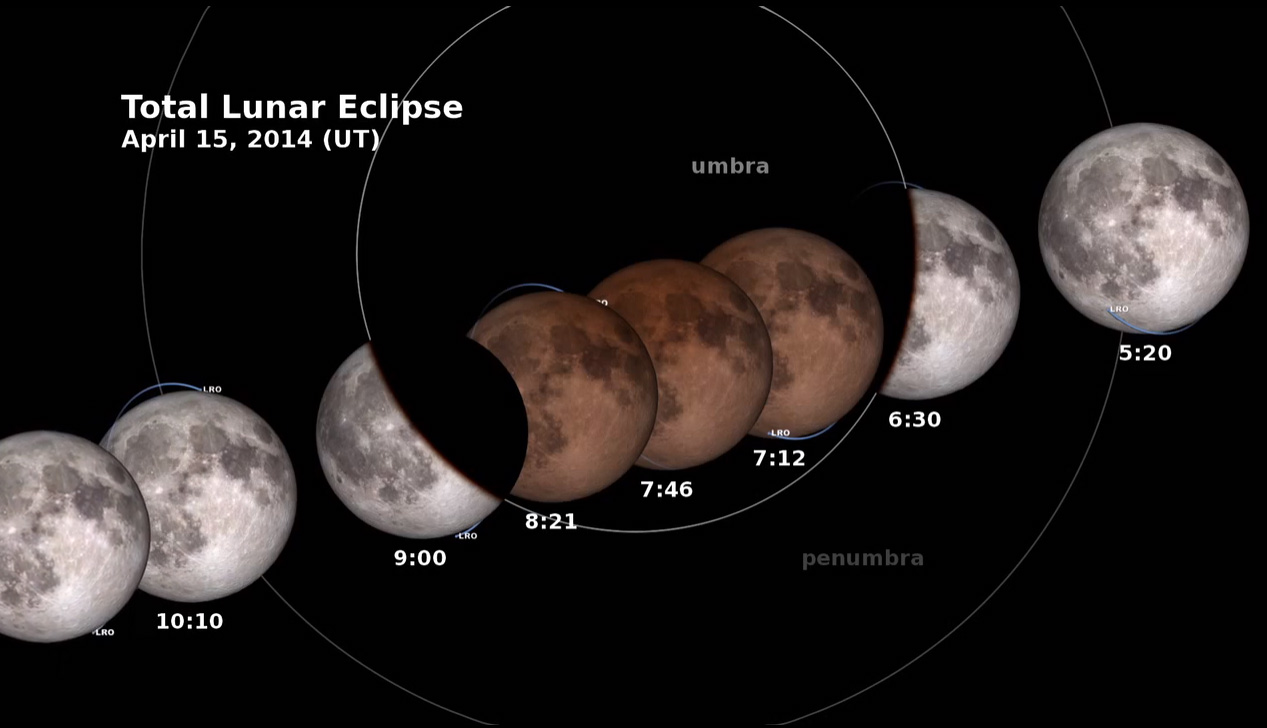
For most U.S. states east of the Mississippi River, tonight's total lunar eclipse will likely turn out to be a total bust, while in contrast, much of the central and western United States will likely get a fine view of the "blood moon" in all its brilliance.
The first total lunar eclipse of 2014 occurs in the overnight hours tonight (April 14) and will be visible across most of North America, South America, Hawaii and parts of Alaska. Depending on your location, it begins either late tonight or in the wee hours of Tuesday, but as with every skywatching event, you can only see it if Mother Nature cooperates.
Tonight's lunar eclipse runs from 12:53 a.m. EDT (0453 GMT) to about 6 a.m. EDT (1000 GMT). If bad weather spoils your view, or you live in Europe or elsewhere outside the visibility zone, you can always watch live webcasts of the total lunar eclipse on Space.com, courtesy of NASA, the Slooh community telescope, the Virtual Telescope Project. [How to Watch Tonight's Total Lunar Eclipse]
Along the U.S. East Coast, a slow-moving cold front stretching from western New York State south-southwest into the central Gulf of Mexico is likely to bring considerable cloudiness to much of the eastern-third of the nation. Generally speaking, anywhere east of a line extending from Sault Ste-Marie, Mich. to Paducah, Ky. to Baton Rouge, La. will have poor sky conditions for getting even a fleeting glimpse of the darkening moon during the predawn hours of Tuesday.
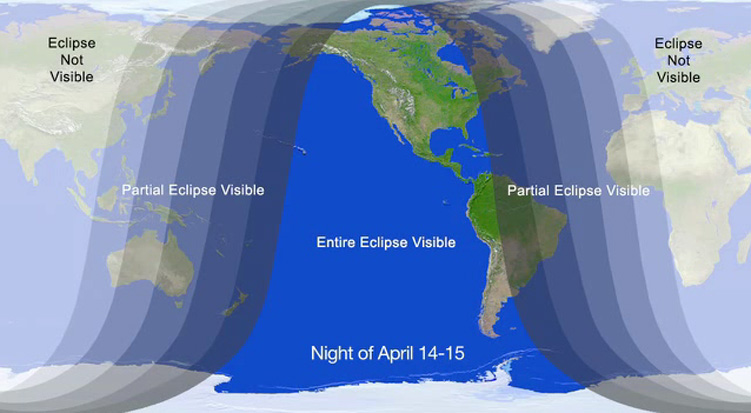
The exception might be inland sections of central and south Florida where the clouds may be thin enough to allow for some visibility of the shady lunar drama.
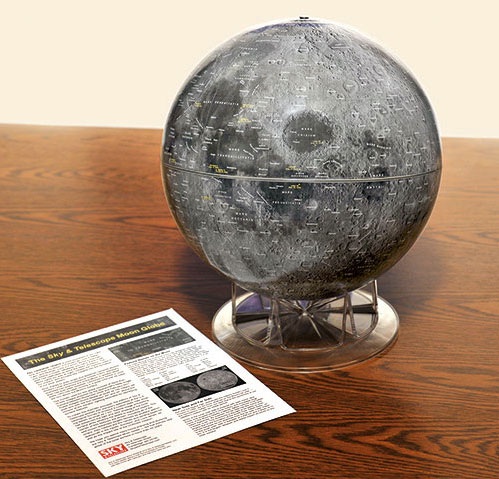
Showers and scattered thunderstorms — a few possibly strong and gusty — could bring as much as one-quarter to one-half inch of rain across parts of the Ohio and Tennessee River Valleys, with as much as an inch over the Florida Panhandle, while snow will fall over parts of northwest Ohio and Michigan.
Over the central and western United States, high pressure over the plains states is expected to bring mainly fair skies. However a cold front draped over the Pacific Northwest into northern California, could bring some cloudiness that may hinder the view. Near and along the coast of Washington State, spotty showers could fall, but for the most part, the western two-thirds of the United States will be dry, tranquil and perfect for viewing tonight's moon show.
Get the Space.com Newsletter
Breaking space news, the latest updates on rocket launches, skywatching events and more!
Lunar eclipses occur when the moon is in the full moon stage and passes through part or all of the Earth's shadow, darkening the moon's typically bright glow. During a total lunar eclipse, the moon is entirely immersed in Earth shadow, and can take on a dusky "blood red" color due to the scattering of sunlight through the edges of Earth's atmosphere. Such moons are sometimes nicknamed "Blood Moons."
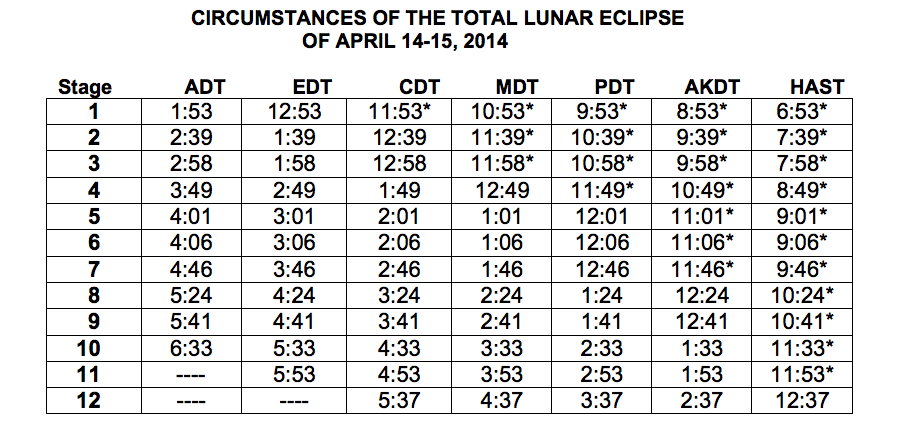
Tonight's lunar eclipse is the first of four consecutive total eclipses of the moon between April 2014 and September 2015 in what scientists call a lunar eclipse "tetrad" series. The next total lunar eclipse will occur on Oct. 8 and is also expected to be visible from much of North America.
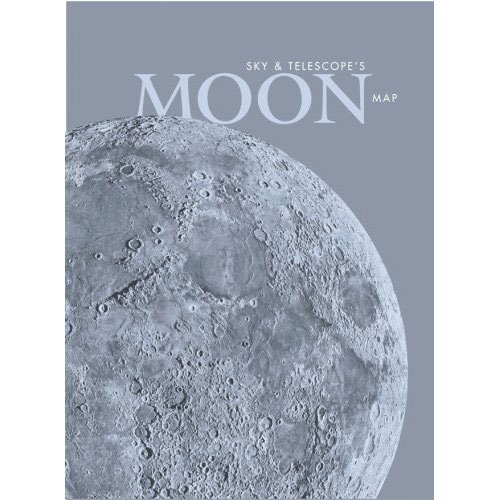
For the very latest forecast for your local area, check the National Weather Service Forecast Offices. Just click on the office that serves your area for the latest weather outlook, including access to local radar and satellite imagery as well: http://www.nws.noaa.gov/organization.php
Editor's Note: If you snap amazing pictures of the total lunar eclipse or Mars, you can send photos and comments to managing editor Tariq Malik at spacephotos@space.com.
Joe Rao serves as an instructor and guest lecturer at New York's Hayden Planetarium. He writes about astronomy for Natural History magazine, the Farmer's Almanac and other publications, and he is also an on-camera meteorologist for News 12 Westchester, N.Y. Follow us @Spacedotcom, Facebook and Google+. Original article on Space.com.
Join our Space Forums to keep talking space on the latest missions, night sky and more! And if you have a news tip, correction or comment, let us know at: community@space.com.

Joe Rao is Space.com's skywatching columnist, as well as a veteran meteorologist and eclipse chaser who also serves as an instructor and guest lecturer at New York's Hayden Planetarium. He writes about astronomy for Natural History magazine, Sky & Telescope and other publications. Joe is an 8-time Emmy-nominated meteorologist who served the Putnam Valley region of New York for over 21 years. You can find him on Twitter and YouTube tracking lunar and solar eclipses, meteor showers and more. To find out Joe's latest project, visit him on Twitter.









